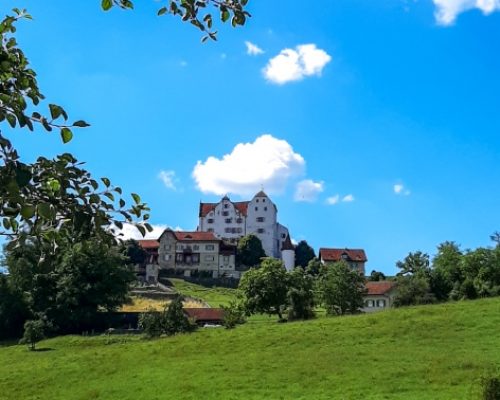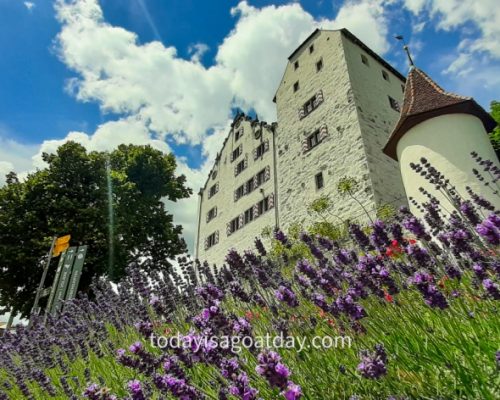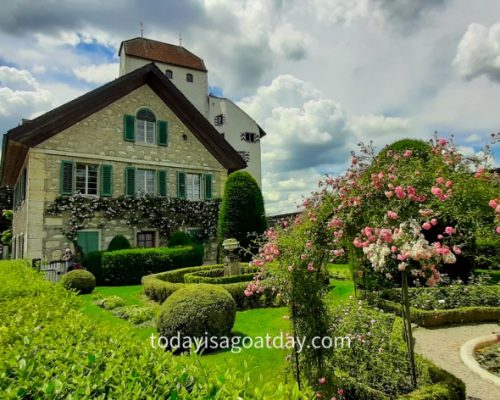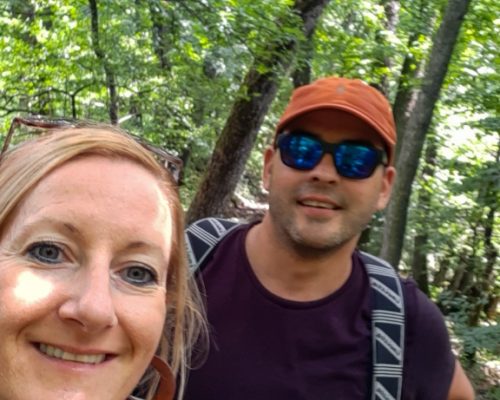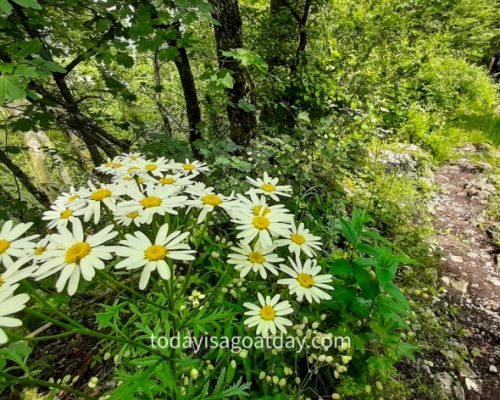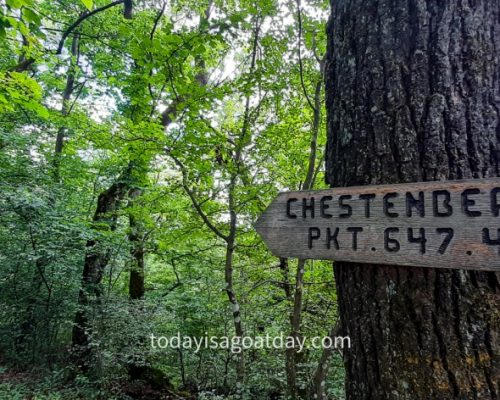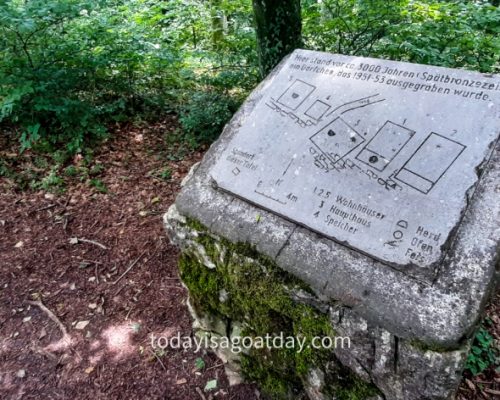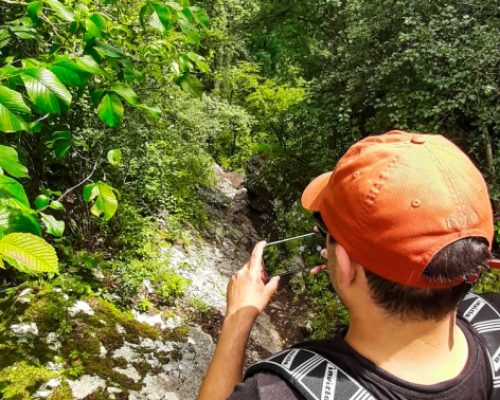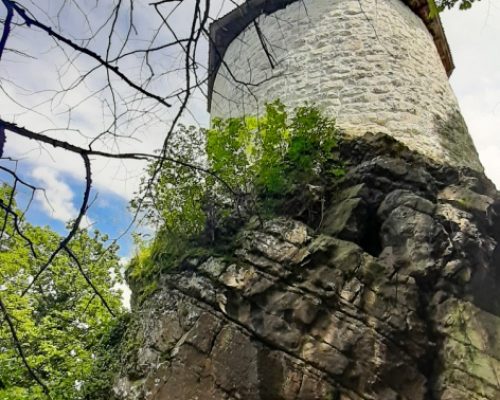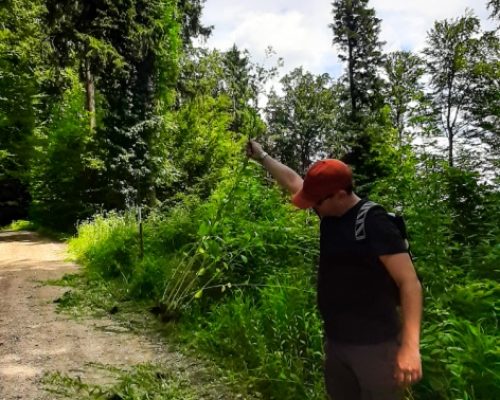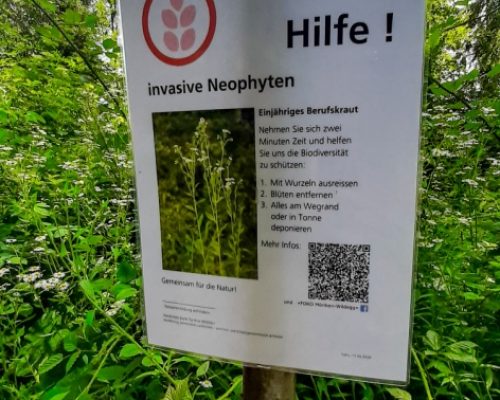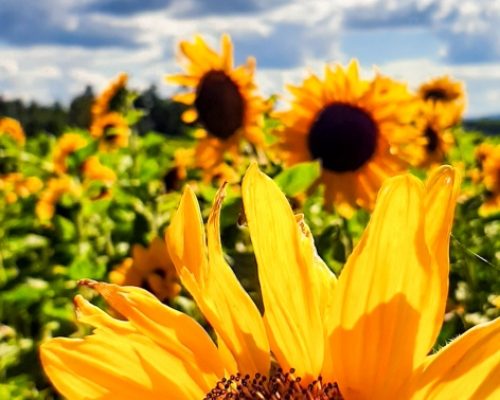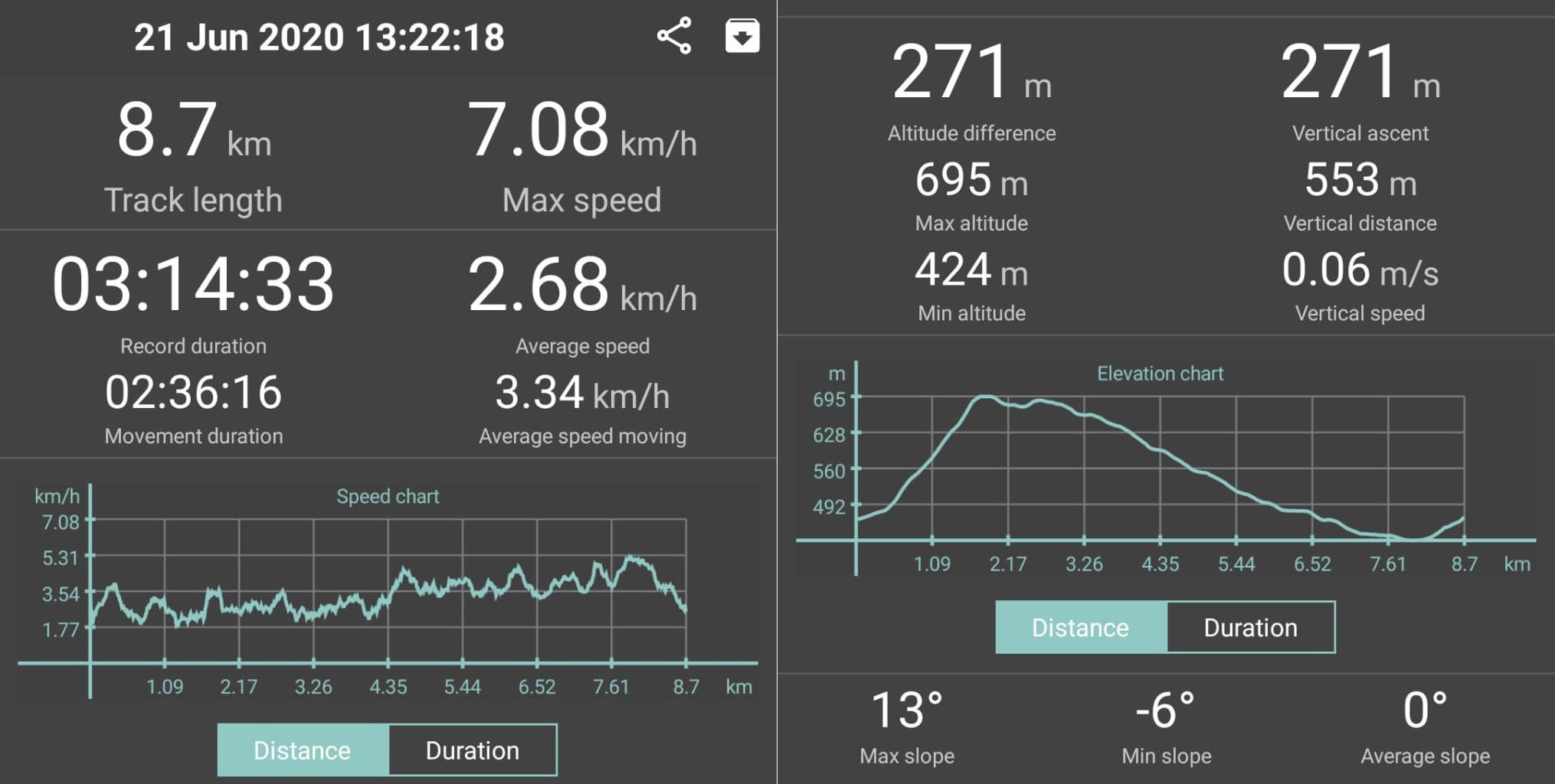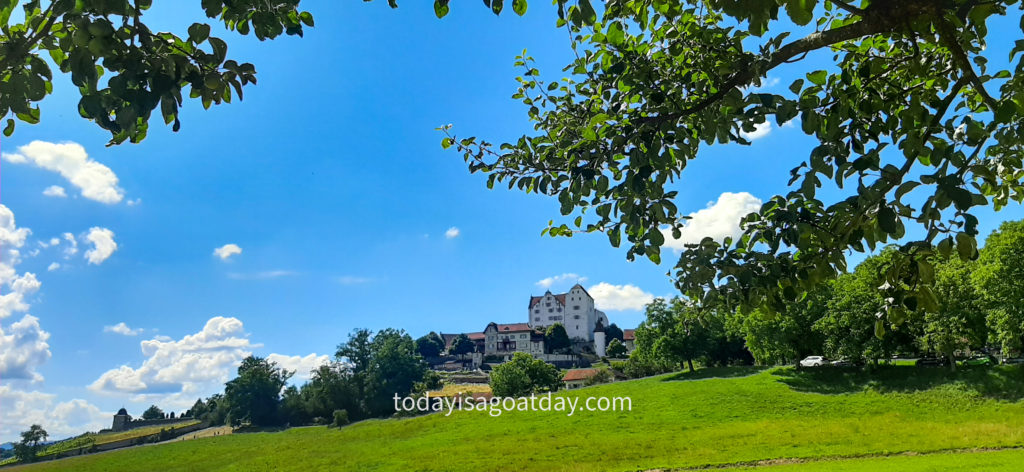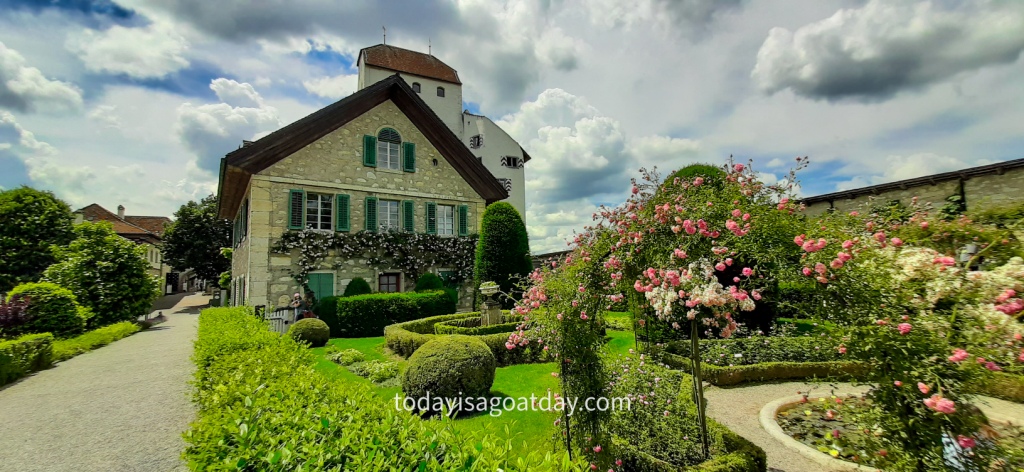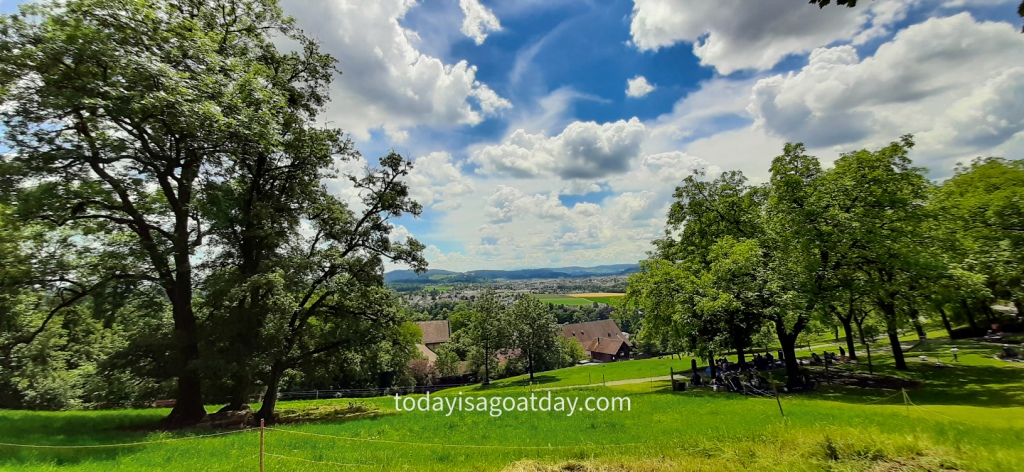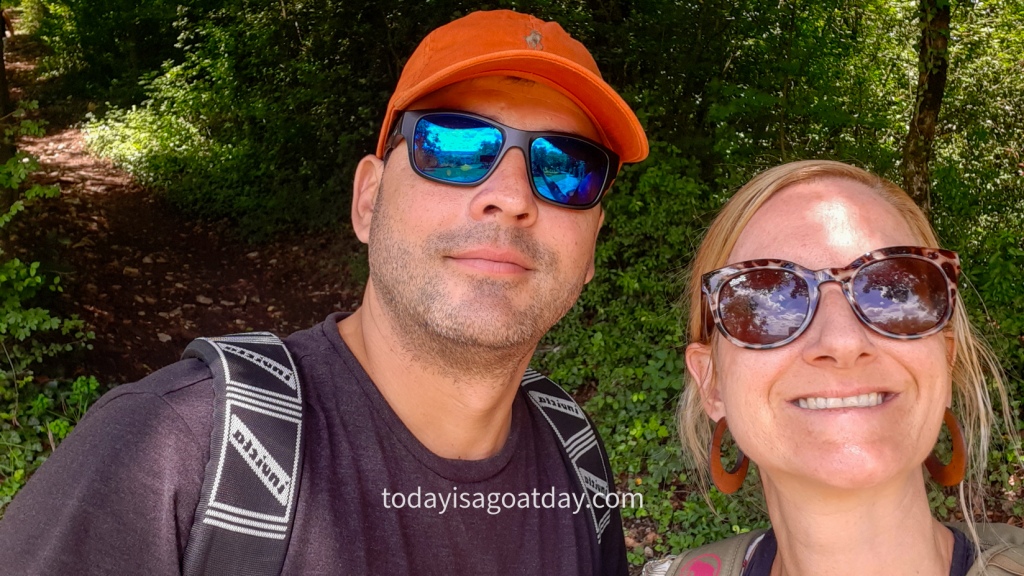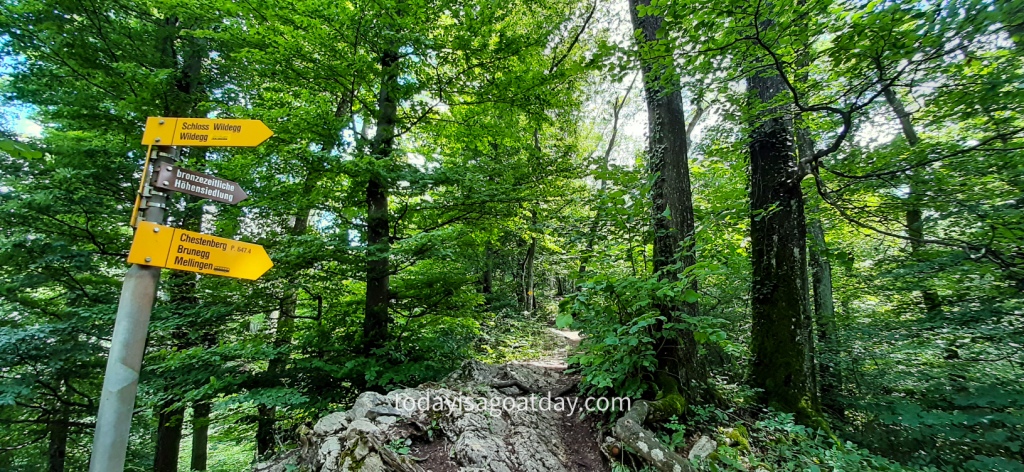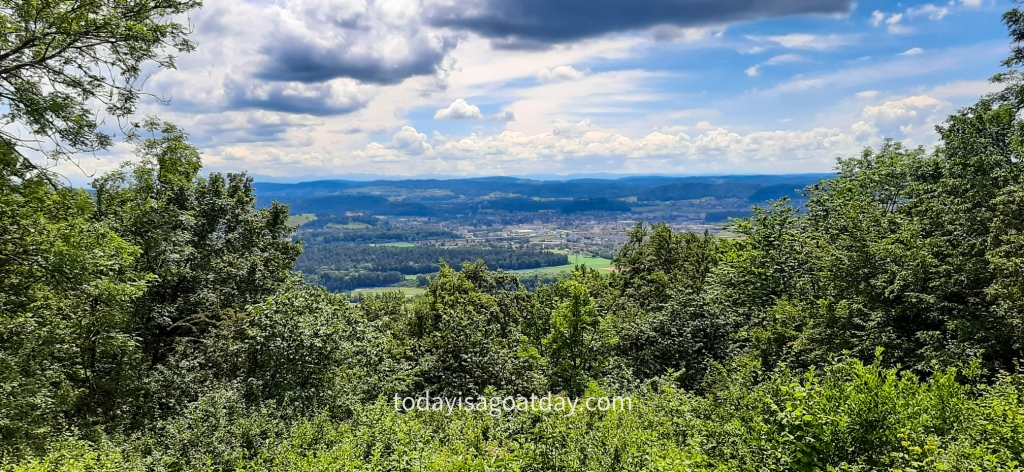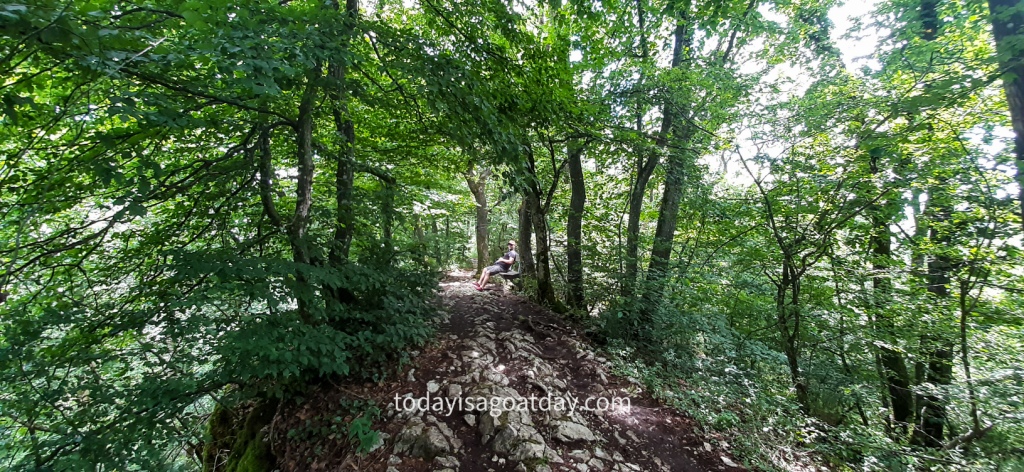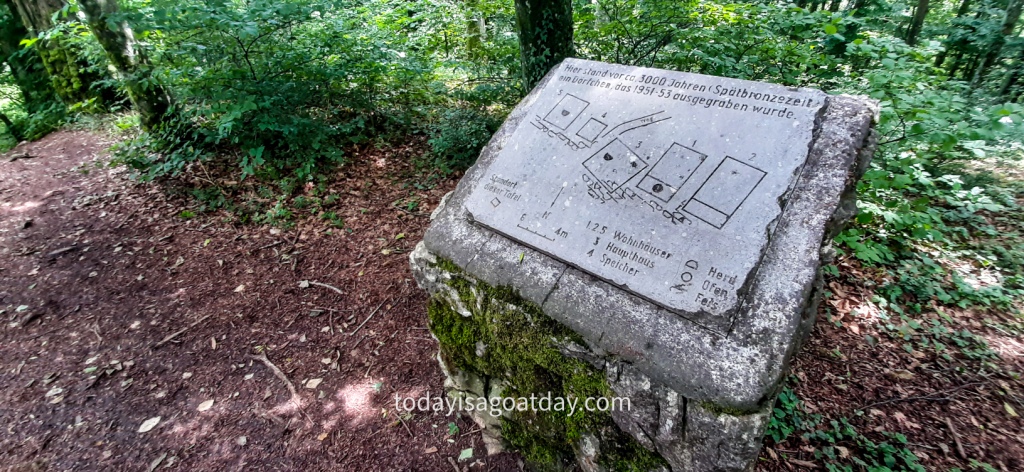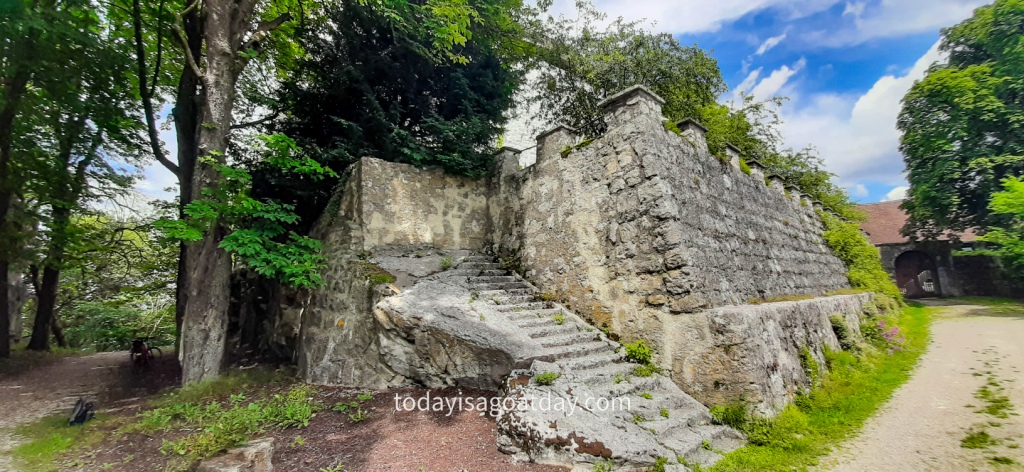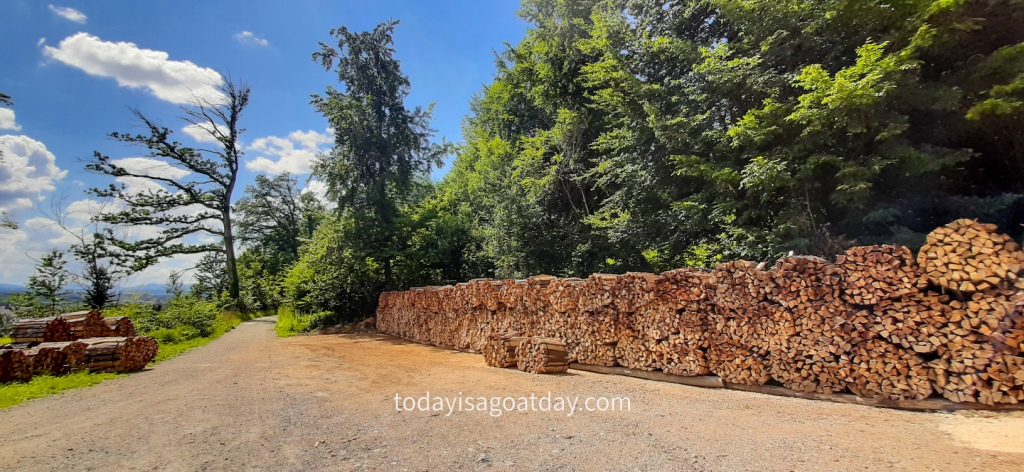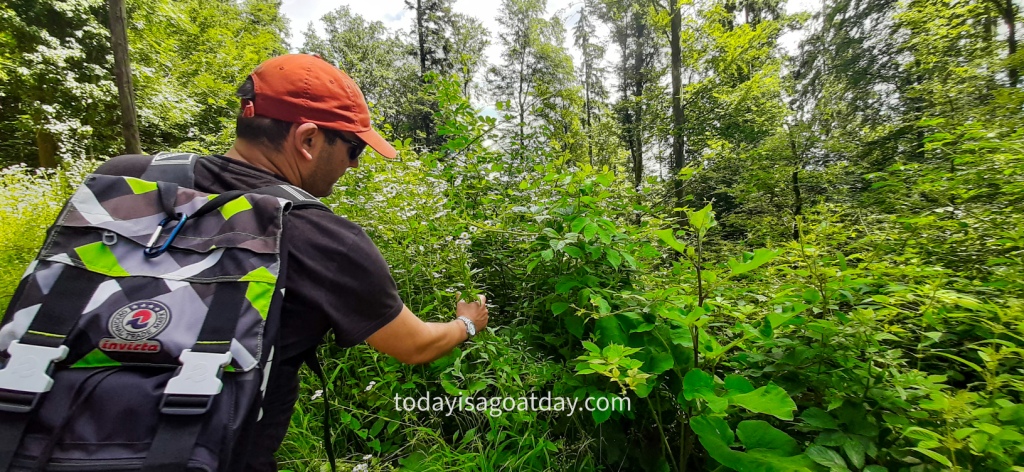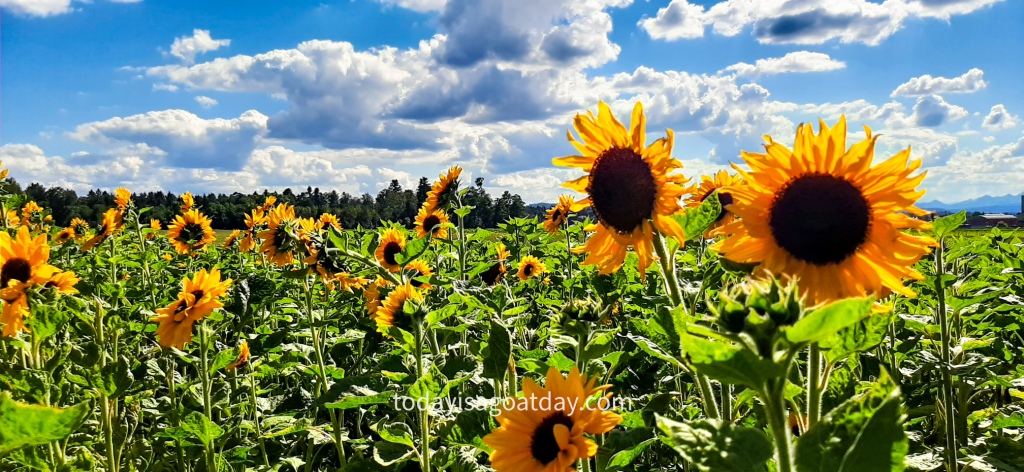Hiking in Aargau From castle to castle
21|06|2020
Hiking in Aargau | From castle to castle
Chestenberg round trek | Hiking in Aargau | Easy-Peasy. Relaxed. Comfortable.
Die Fakten:
Ausgangspunkt | Wildegg castle, Möriken-Wildegg
Endpunkt siehe oben - Rundweg
Reine Laufzeit | 2 Std 30 Minuten
Aufnahmedauer insgesamt | 3 hrs 15 minutes
Streckenlänge | 8.7 km
Aufstieg | 271 m | Abstieg | 271 m
Technischer Anspruch | leicht |Kondition | leicht
Familienfreundlich? Not suitable for prams
Erfrischung | WC Stopp Ja
Wegpunkte | Wildegg castle – Chestenberg – Möriken – Wildegg castle
Beschilderung | provided ![]()
The Chestenberg round trek, which leads you from one castle to another and back, is an ideal hike for a relaxed sunny afternoon. Chilled and laidback hiking in Aargau! The walk starts at beautiful Wildegg castle and leads you via the rocky “Chestenberg” mountain ridge path to Brunegg castle. During your mini ridge walk, you will also pass by a prehistoric archaeological site. Don`t miss visiting the lovely castle and gardens before or after the hike!
Wildegg castle | A true fairy-tale castle in the neighbourhood
Magical Wildegg castle (“Schloss Wildegg” in German) is nestled between Aarau and Brugg in the district of Lenzburg, canton Aargau. As this is our home canton, for us, the pretty castle is practically in the neighbourhood!
Hence, we decided to try out the hike on bright Sunday afternoon. This is ideal since we did not want to travel too far. This turned out to be an excellent idea!
On our drive up to the castle, we were impressed by how beautiful and elegant it looked. The castle is wonderfully restored and settled on stunning premises. It is surrounded by perfectly shaped tress, nicely cut green lawns, vineyards and immaculate gardens. A true fairy-tale castle!
Wildegg Castle was built by the Habsburgs in the 13th century and later owned by generations of the noble Effinger family.
Today the castle is a residential museum that offers an authentic experience of its aristocratic history.
Don´t miss visiting the castle!
Before you start your hike, we suggest to visit the amazing Wildegg castle. Regrettably, we missed to do just that as we arrived too late after our hike. What a pity!
We will return, however, to catch up on that, as the castle and surrounding gardens have a lot to offer. Visitors are greeted by lords and ladies and former castle inhabitants provide informative insights into the patrician castle life. Furthermore, the vegetable, pleasure and ornamental gardens provide around 300 ancient cultivated and medicinal plants. At least that`s what we heard and read. At this point I must mention it again, don´t forget to check the opening times of the castle in advance!
Luckily, the beautiful rose gardens were still available to visit, along with the organic produce farm. Hence, we could at least get an idea of the outdoor aristocratic life back then. In addition, we enjoyed a delicious organic ice cream from the onsite farm shop after the hike. This made up a little for the missed museum experience.
Hiking in Aargau | Let´s get started!
Nonetheless, simply visiting the grounds and surroundings already put us in the right spirit to commence our walk.
We left the wonderful rose gardens behind us and walked straight ahead towards the forest.
The lawns on our right were very inviting to sit down and relax. In fact, a good few people were around, picnicking and enjoying the lovely weather.
We, however, took a turn on the left and went straight into the forest and cooling shade. From here, the path steadily ascended until we reached the rocky ridge path.
An enjoyable mini-ridge hike
If you have read our “Lägern Ridge Hike in Baden” Blog, you are already aware, that I am very careful when it comes to ridge walks. If you don´t know it yet, check it out later hier, then you will understand what I am talking about. I still get the shivers when I think about it.
The Chestenberg ridge hike, however, is very different to our previous experiences of ridge trails. Thanks God!
Firstly, even though you definitely need to watch your steps, it is at no time dangerous.
Secondly, there are no exposed, terrifying parts that make you want to go down to your knees and cling on to the rock.
Subsequently, even though you do have to be reasonable careful, as always, you can utterly enjoy this rocky trail. In fact, it is a good practise for other more challenging treks.
To top it off, every now and then the trees reveal a view into the distance.
There are also several benches and fire places on the way. As you can imagine, we also took advantage of it and stopped for little breaks every now and then.
Chesten”berg”
Before we knew it, we had already reached the highest point of the Chestenberg mountain. The word “berg” means mountain, however, in all fairness, it does not really apply here. I do not wish to do any injustice to Chestenberg, but it would be more suitable to call the wooded massif a “hill” rather than a “mountain”.
The name Chestenberg is derived from the Swiss German and German word “Edelkastanie”, meaning “noble chestnut”. I chose not to research this funny fact further, as I might have become too distracted and carried away. Therefore, I concentrated rather on other interesting information.
Such as: The Chestenberg extends over a length of three kilometres and reaches a height of 647 metres above sea level. Hence, the word “hill” might be more appropriate, considering the Swiss scales of mountains.
Furthermore, there are two castles on the flanks of the Chestenberg: Wildegg castle (which we know already) and Brunegg castle (which we will get to know later).
Also, a prehistoric site from the Bronze Age can be found on Chestenberg! Now, that´s really cool! Hiking in Aargau catapults us from the middle ages of Wildegg castle even further back in time.
A few facts about the Chestenberg prehistoric settlement
- The first pieces from the Bronze Age were discovered on the Chestenberg in 1948
- The many beautiful findings made of bronze and ceramics can be found in the Museum Burghalde in Lenzburg
- Excavations were carried out from 1950 to 1953
- It was revealed that a settlement of five to seven houses once stood in this location
- The inhabitants there worked mainly in cattle breeding and agriculture
- The settlement was inhabited until the beginning of the second phase of the Iron Age (800 – 500 and 500 – 58 BC)
So much unexpected history during this cool hike! We truly enjoyed checking out this site and then continued our way until the end of the ride.
The next castle | Brunegg castle
As soon as we emerged from the forest, we pretty much arrived in front of the next interesting site. Brunegg castle, which is located at the eastern end of the range of hills. This is getting better and better!
The castle was built in the 13th century, most probably along with the Wildegg castle on the other end. As it is often the case with castles, it might have been built as border defences. Subsequently, the castle was occupied by the Habsburg knights.
You can of course read up on a lot more historic information on the web if you are interested.
Brunegg castle, however, is privately owned by the von Salis family and cannot be viewed, unfortunately.
The way back to Wildegg
Our return journey led us on a wide forest path and through the outskirts of the residential area of Möriken.
Here we got to know another interesting fact. Not every lovely looking flower is as lovely as it seems.
About invasive neophytes
Doesn´t this flower, called “Einjähriges Berufkraut” (Erigeron annuus) simply look pretty?
Unfortunately, despite looking utterly innocent it is rather harmful and therefore blacklisted.
The flower is categorized as a “neophyte”. Neophyte is the name for plants that have been intentionally introduced or accidentally introduced since the discovery of America (1492).
Literally translated, “neophytes” mean “new plants”. Around 550 species have settled in Switzerland!!! The majority of these alien plants are luckily well integrated into our environment and have enriched the local flora.
A few of the new plants can become invasive, however. These plants are called “invasive neophytes”. They spread widely and displace the native flora.
Regrettably our lovely camomile look-alike plant belongs to the invasive kind, which is why you might find signs along your hiking route inviting you to help the environment by ripping it out with the roots! And this is exactly what we did!
On a side note, should you, like me, place them in a vase on your dining table, be prepared for a lot of tiny little petals to fall out and spread all over the area. Quite a mess, I have to admit.
Having done our share in supporting the Swiss environment by ripping out the dreadful pretty plants, we felt quite satisfied.
From invasive neophytes to popular sunflowers
From here, we happily walked back to Wildegg castle to pick up our car. And a well-deserved ice cream! On our way back, we passed by a wonderful sunflower field.
What a shift! From the sight of a very unwanted plant, we ended up in front of a field of probably one of the most popular flowers altogether.
Subsequently, we took a moment to enjoy the beauty and the fact that these would not have to be ripped out. We took a long breath in and a full breath out. Only one, for the vase at home.

